Birth defects such as a cleft palate or heart defect do not simply arise out of nowhere. Often the cause can not be found. Almost always, several factors play a role. Using the stories of three children with birth defects I will discuss what factors these may be. With this information, I hope we can prevent (more) birth defects in the future!

How do birth defects arise?
Right at the very beginning, when you have just realised you are pregnant, one cell becomes a foetus with all its organs in progress. It is an exciting period. Are conditions not optimal? Then these can alter development. In the Netherlands, this occurs in about 3 per cent of newborn children and the number is not decreasing.1.
Often a randomly mutated gene isn't the cause. Bad luck, so to speak. In heart or vessel abnormalities, for example, genes are responsible for only 20% of cases2. But even if a gene is responsible for a congenital defect, that error could still have been caused by exposure to a toxic substance!2. The pregnant woman's environment, the environment in the womb and the woman's health play the biggest role.
Differences between provinces and countries
The role of the environment can be seen in the differences between countries and even within our own country. In 2018, it was found that in Limburg congenital anomalies occur in 4% of children. A lot higher than the national average3. That's a difference of about 100 children a year. Every year. Even more striking is the difference between countries. The Netherlands, with a prevalence of 3%, certainly does not have the most congenital malformations. But not the least either. In Europe the figures range between 2 and 4.5%!4.
'A birth defect is a signal that something has disrupted embryonic development'
Other health problems associated with birth defects
Many congenital defects can now be properly corrected. And fortunately, thanks to research, we also know that a child's health can be influenced permanently, even after birth5. But other problems are certainly seen slightly more often in children with congenital defects. For example a higher risk of autism6 and a higher risk to develop cancer, both in childhood and also in adulthood7,8. (That chance remains very small, of course).
A congenital defect is not an isolated anomaly
A heart defect, a harelip, an extra toe... They are not separate from the rest of health. A congenital defect is a signal! A signal that something has interfered with development. Think of it this way: the conditions that caused a heart defect also affect the rest of the organism5. But these invisible traces may become clear later. As if only the most sensitive organ - for those particular circumstances, and also for that particular moment in development - shows what the very young organism has been through.
What remains invisible? Possibly brain development is not optimal, making learning more difficult later on, or the kidneys are smaller making you more likely to have high blood pressure in middle age. Of course, a heart defect itself - and all the medical care that comes with it, also affects your health. It is hard to work out where one stops and the other begins. However, each congenital defect does give us a clue - what might the environment (in the broadest sense) look like to realize its highest potential?
Smoking during pregnancy
A case of craniosynostosis
The young infant had a skull like a boat. You could see it clearly from the side. The forehead and back of the head bulged out, while the sides of the head were remarkably flat. The middle skull suture had closed too early. The mother asked "Is it me? - had she caused this? I said 'no, it's bad luck', trying to comfort mother. But actually, I had no idea. Not of the cause, but also what to say to a mother at such a moment.
Later I found out that the mother had smoked in pregnancy. And yes, smoking increases the risk for craniosynostosis. Should I have told her it was her fault? She was among a group of some 3.5% Dutch women who - seriously addicted - smoke throughout their pregnancy.9. But craniosynostosis occurs in less than 0.1% of newborns. So how guilty can she be?
The infant was okay. An operation allowed the head to grow normally again.
Many types of smoke
Smoking is something we all do to some extent these days. Smoke from a fireplace, from wood stoves, barbecue, traffic and industry also contains harmful substances. These so-called Polycyclic Aromatic Hydrocarbons (PAHs) increase the risk of birth defects10.
You would expect that in areas with high levels of PAHs - as has been demonstrated around Tata Steel11 or even in a densely populated neighbourhood with many wood-burning stoves - there are therefore also more birth defects. This smoke comes on top of the smoke a mother herself already ingests through a cigarette - which she in turn owes to the tobacco industry. As far as I am concerned, it makes it all the more important to reduce emissions from such a big company. Especially since there is more smoking around Tata Steel than average.
Unfortunately, I could not find any data on the prevalence of birth defects in the area surrounding Tata Steel. In the Netherlands, congenital birth defects are only structurally tracked in the Northern provinces of Groningen, Drenthe and Friesland. Provinces where the air is probably the cleanest.
Malnutrition in pregnancy
A congenital heart defect
She was not yet thirty and had just had her fifth child. When she came in with her 7-week-old daughter, I was shocked. Mother looked like a skeleton, pale and covered in eczema. The little girl in her arms had a large scar on her chest. 'One in five children has something, I always said' mother told me. Unplanned, a fifth child was on the way and then it became clear her daughter had a major congenital heart defect. After giving birth, an operation soon followed. Successful luckily.
This mother was clearly malnourished, she had asthma and gestational diabetes despite her low weight. She had not taken folic acid and lived with her entire family in a small flat. Extensive (including genetic) research had found no cause for the heart defect. She had not smoked, taken no drugs and no medication. Cause unknown it said in the letter from the obstetrician.
'Malnutrition is enough reason for a birth defect to occur'
Malnutrition increases the risk of birth defects
According to Professor Tessa Roseboom, maternal malnutrition can be enough reason for the development of a congenital defect5. Malnutrition results in a slower metabolism. All the body's functions work at a slower pace. Your hormone balance also changes. For instance, you may make less progesterone and your oestrogen increases because your liver becomes less good at excreting it. The balance between these hormones and their impact on the health of the unborn child is still under researched.
One factor is not enough: there is an interplay
For this mother, there was much more at play besides malnutrition. Her housing situation, an unplanned fifth pregnancy, her asthma. And she lived in environment with air pollution. Why then only a birth defect in this child you may ask?
Well, think of it as a combination of several factors, which also affect each other. Some factors protect you, like good health. Other factors are downright toxic, or contribute a tiny bit to the risk of a congenital anomaly. For instance, the chance of having a congenital defect is indeed slightly higher if you are the third, fourth, fifth and so on child12. And they are also more likely to occur if you get pregnant again quickly - within 6 months - after your last pregnancy13. Then all kinds of nutrients are 'depleted' is the hypothesis, such as folic acid, but also vitamins B6 and B1214. Eating nourishing foods is even more important in that case.
Tipping point
You can put all factors on a scale. On one side are all the protective factors and on the other all the harmful factors. With this mother, the harmful factors were slightly heavier than all the protective factors. And so the scale just tipped in the wrong way. In this case, with her fifth child.
Had the circumstances been slightly different, had there been slightly more protective factors - a good home, no money worries, good nutrition - I dare say things could have been really different.
Hormone disruptors in pregnancy
The congenital abnormality hypospadia
When I open the nappy mother breathes a sigh. In her son's case, the opening of his urethra is not in the right place. Not at the tip of the glans, but somewhere below it. He was born with hypospadia, an abnormality that affects almost 1 in 200 boys15. This makes it one of the most common birth defects. It can go wrong very early in pregnancy, between the 6th andthe and 13ththe week, the urethra begins to form.
Possible causes of hypospadia
Suspected causes of hypospadias are toxins such as pesticides and endocrine disruptors16. The latter group includes PFAS, phthalates (plasticisers of hard plastic), parabens (preservatives) and bisphenols (in plastic). Rodents develop hypospadias when given high doses of phthalates17. And women who worked as hairdressers during pregnancy - phthalates are in hairspray and shampoo - were more likely to have a child with hypospadias18. Yet it seems science and politics are not yet convinced that these substances are harmful.
For former urologist Gert Dohle, it is quite clear that these substances play a role in disrupting male sex development. According to him, it explains not only all kinds of congenital abnormalities of the penis, testicle, scrotum and prostate, but also the huge increase in testicular cancer19.
Estrogen: a female hormone?
Oestrogen used to be (and often still is) seen primarily as a female hormone. Female problems, such as the many ailments during pregnancy and around menstruation and even miscarriages, were seen as signs of a deficiency of the female hormone oestrogen. And so women were given extra 'female' estrogen for their deficient female functions. Synthetic estrogen also turned out to be very cheap to make. In 1947, millions of women were prescribed the synthetic estrogen DES (di-ethylstilbestrol). It caused hypospadia20 and numerous other congenital defects. The reason? Our assumption that estrogenic substances - including our own estrogen - are harmless.
Estrogen is not harmless
The name of a substance can influence how you look at it. By calling estrogen a female hormone, you may only have an eye for the positive effects of the hormone. Still, estrogen is mainly described as a hormone that causes the growth of breasts and hips, the endometrium and ovaries. All good right? But the hormone does not only affect the sexual organs. Estrogen can stimulate growth in almost any cell Such as cells involved in the growth of vessels. For example, in haemangiomas (strawberry spots) - benign blood vessel tumours that occur in about 10% of all babies - too much oestrogen plays a very likely role21. Growth is not always a good thing. A foetus's cells need to grow but also specialise into an arm, foot or heart chamber. Thus, the wrong signal at the wrong time can interfere with development.
Endocrine disruptors are often estrogen-like substances
Hormone disruptors but also pesticides, the aforementioned PAHs found in smoke and even soot22 all have estrogenic properties. Even X-rays, known to cause birth defects, can have an estrogenic effect on the cell23. Striking isn't it? Endocrine disruptors fits into the same hole as estrogen, like a key. As such, they also have an effect on the cell similar to that of estrogen. According to the Dutch RIVM, we do not need to worry so much about endocrine disruptors. In fact, phthalates, bisphenols and parabens have a weak estrogenic effect24. But that does not mean that weak-acting estrogens cannot upset the delicate hormone balance in our body. Not to mention an accumulation of all different 'weak-acting' endocrine disruptors. Fortunately, more and more medical doctors are taking notice of this25.
The influence of your own hormone balance
Not all pregnant women exposed to endocrine disruptors give birth to children with hypospadias or other birth defects. The cause could lie in the woman's own hormone balance. For example, women with a high amount of fat cells produce more estrogen and also appear to be more likely to have a child with hypospadia15. Other estrogenic substances could also play a role. Such as an excessive intake of phytoestrogens via non-fermented soy. Again, hypospadia only occurs if other protective factors are not in play.
Take home: how to prevent birth defects in your baby?
Congenital defects are multifactorial. Environment, nutrition, your own hormone balance, toxins and more all probably play a role. In such an interplay, there is no single culprit. Let's not look for one either! Preventing birth defects in future babies is all about this: create as many protective factors and reduce as many harmful factors as possible.
It is impossible to avoid all harmful substances. But I am convinced that by increasing protective factors - such as a healthy diet with enough fibre, extra folic acid, increasing women's health, better hormone balance, good metabolism, etc.- we will see far fewer birth defects. It is not only pregnant women who are responsible for the health of future generations. The whole of society is.
Want to know more?
Take a look at my other articles or subscribe to my Dutch newsletter below. I send an interesting newsletter every month with a link to my latest articles as well. Or follow me on Instagram.
Would you like to chat with me after reading this article? You can: get in touch with me or schedule a free consultation. I am happy to guide you if you want to prepare for a healthy pregnancy.
References
1. https://www.umcg.nl/-/eurocat/jaarlijkse-cijfers.
2. https://www.vzinfo.nl/aangeboren-afwijkingen-van-hartvaatstelsel.
3. https://www.limburger.nl/cnt/dmf20180524_00062550.
4. https://eu-rd-platform.jrc.ec.europa.eu/eurocat/eurocat-data/prevalence_en.
5. Roseboom, T. De Eerste 1000 dagen. Het fundamentele belang van een goed begin vanuit biologisch, medisch en maatschappelijk perspectief.. (de Tijdstroom, Utrecht, 2018).
6. Timonen-Soivio, L. et al. The Association Between Autism Spectrum Disorders and Congenital Anomalies by Organ Systems in a Finnish National Birth Cohort. J Autism Dev Disord 45, 3195-3203 (2015).
7. Lupo, P. J. et al. Association Between Birth Defects and Cancer Risk Among Children and Adolescents in a Population-Based Assessment of 10 Million Live Births. JAMA Oncol 5, 1150 (2019).
8. Daltveit, D. S. et al. Cancer risk in individuals with major birth defects: large Nordic population-based case-control study among children, adolescents, and adults. BMJ m4060 (2020) doi:10.1136/bmj.m4060.
9. Scheffers-van Schayck, T., den Hollander, W., van Belzen, E., Monshouwer, K. & Tuithof, M. Monitor Drug Use And Pregnancy 2018. (2019).
10. Li, N. et al. Assessment of interaction between maternal polycyclic aromatic hydrocarbons exposure and genetic polymorphisms on the risk of congenital heart diseases. Sci Rep 8, 3075 (2018).
11. https://www.rivm.nl/nieuws/stof-in-ijmond-bevat-veel-pak-en-metalen.
12. McNeese, M. L., Selwyn, B. J., Duong, H., Canfield, M. & Waller, D. K. The association between maternal parity and birth defects. Birth Defects Res A Clin Mol Teratol 103, 144-156 (2015).
13. Petersen, J. M., Yazdy, M. M., Getz, K. D., Anderka, M. T. & Werler, M. M. Short interpregnancy intervals and risks for birth defects: support for the nutritional depletion hypothesis. Am J Clin Nutr 113, 1688-1699 (2021).
14. Petersen, J. M. et al. One-Carbon Cofactor Intake and Risk of Neural Tube Defects Among Women Who Meet Folic Acid Recommendations: A Multicenter Case-Control Study. Am J Epidemiol 188, 1136-1143 (2019).
15. de Jong, T. P. V. M. Hypospadia and congenital curvature of the penis in children and its surgical treatment. Dutch Journal of Medicine 150, 2072-2077 (2006).
16. Zheng, Z., Armfield, B. A. & Cohn, M. J. Timing of androgen receptor disruption and estrogen exposure underlies a spectrum of congenital penile anomalies. Proceedings of the National Academy of Sciences 112, (2015).
17. Botta, S., Cunha, G. R. & Baskin, L. S. Do endocrine disruptors cause hypospadias? Transl Androl Urol 3, 330-9 (2014).
18. Ormond, G. et al. Endocrine Disruptors in the Workplace, Hair Spray, Folate Supplementation, and Risk of Hypospadias: Case-Control Study. Environ Health Perspect 117, 303-307 (2009).
19. Sinterniklaas, B. Steeds meer trage zwemmers: zaadkwaliteit sterk gedaald. (2022).
20. Cliff, H. et al. Hypospadias in sons of women exposed to diethylstilbestrol in utero: a cohort study. The Lancet 359, 1102-1107 (2002).
21. Chang, E. I., Chang, E. I., Thangarajah, H., Hamou, C. & Gurtner, G. C. Hypoxia, Hormones, and Endothelial Progenitor Cells in Hemangioma. Lymphat Res Biol 5, 237-244 (2007).
22. Wu, W. Z., Chen, J., Rehmann, K., Schramm, K.-W. & Kettrup. Estrogenic Effects from Household Stoves. Ecotoxicol Environ Saf 53, 65-69 (2002).
23. Peat, R. Radiation and Growth: incoherent imprinting from inappropriate irradiation. Ray Peat's Newsletter Preprint at (2011).
24. https://www.rivm.nl/hormoonverstorende-stoffen.
25. Nieuwdorp, M. Wij Zijn Onze Hormonen. (De Bezige Bij, Amsterdam, 2022).


